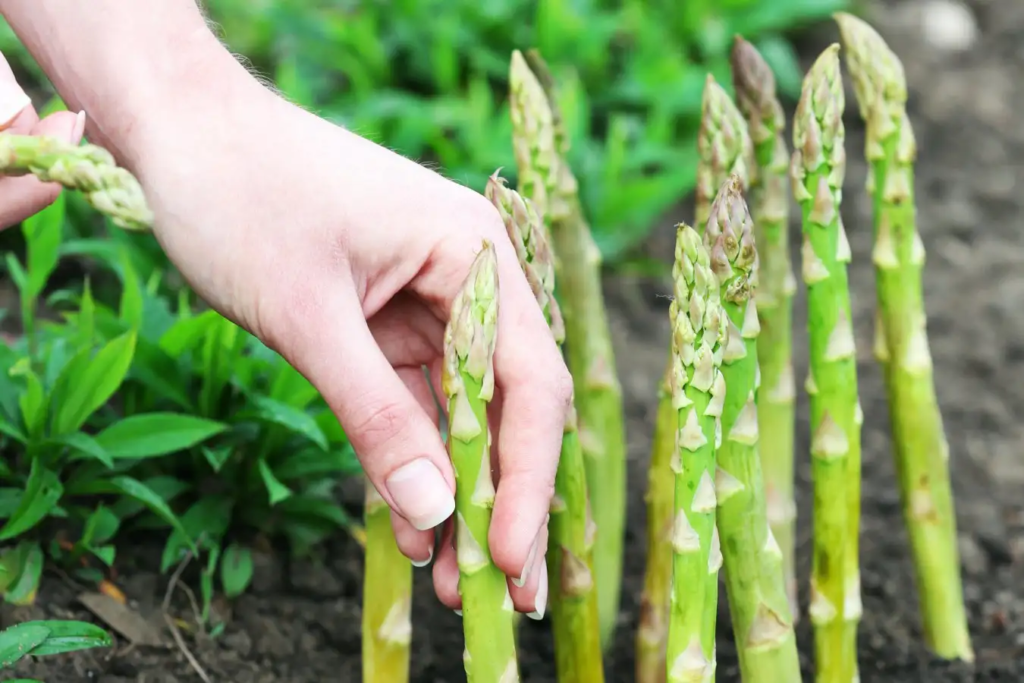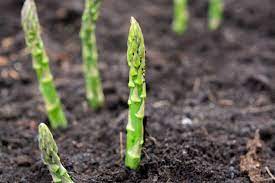Asparagus is a nutritional powerhouse, offering a wide range of health benefits while being a versatile addition to your meals. This often-overlooked vegetable can also become a long-lasting and low-maintenance crop in your own garden. Once established, asparagus plants can produce harvests for decades, making them a smart choice for any home gardener. Here are nine tips to help you grow your own asparagus at home and enjoy its benefits year after year.
1. Choose the Right Location

When starting from seed, it’s essential to begin indoors, typically between February and May. Select a room that receives ample natural light, ideally with temperatures ranging between 70°F and 85°F. This environment will help your seedlings thrive before being transplanted outdoors.
2. Soak and Plant the Seeds
Before planting, soak your asparagus seeds in water for about 2 hours. This will encourage germination. After soaking, plant three seeds in each 3.5-inch pot filled with sterile soil. Cover the seeds lightly with sand for optimal growth.
3. Pot Placement and Drainage

Ensure your pots have proper drainage holes to prevent waterlogging. To avoid root rot, place your pots in a tray or pan and water from below. If needed, use a heating pad to maintain warmth and help seedlings grow strong.
4. Transplant When Ready
After about three months indoors, your seedlings should be ready for transplanting outside. Wait until the risk of frost has passed. Plant the seedlings outdoors, spacing them 18 inches apart, and place the rows 4 inches apart to allow room for growth.
5. Be Patient and Nurture Growth

As your asparagus plants begin to grow, lightly cover them with soil. Water them once a week, and ensure they receive plenty of sunlight throughout the summer. Come fall, trim back any dead growth. After about three years of this routine, your plants will be ready to produce their first harvest.
6. Consider Asparagus Crowns for Faster Results
If waiting three years is too long, you can opt to plant asparagus crowns—pre-grown asparagus roots that are ready for immediate planting. Be sure to choose a variety that suits your climate and region, and prepare your soil accordingly for the best results.
7. Prepare Your Planting Beds

For optimal growth, asparagus prefers well-draining soil with a neutral pH. Dig 12-inch troughs in your beds, and create small dirt cones at the bottom of each furrow, spacing them at least 18 inches apart. Place each crown on top of the cone, ensuring the roots dangle down into the trench.
8. Care for Your Asparagus
Keep the soil around your asparagus crowns moist and weed-free. As the plants grow, add more soil to keep the crowns buried. After two years, your asparagus should be strong enough to begin harvesting.
9. Harvesting Tips
In the first year, limit your harvest to just four weeks to allow your plants to develop. In subsequent years, you can harvest for longer periods. You’ll know your asparagus is ready to be cut when the shoots reach 8 inches in height. Use a sharp, clean knife to cut the spears at ground level.
By following these steps, you can enjoy a bountiful asparagus harvest for decades, all from the comfort of your own backyard. With the right care and patience, this versatile vegetable will not only provide a steady supply of fresh, homegrown produce but also enhance your garden’s beauty and value.
